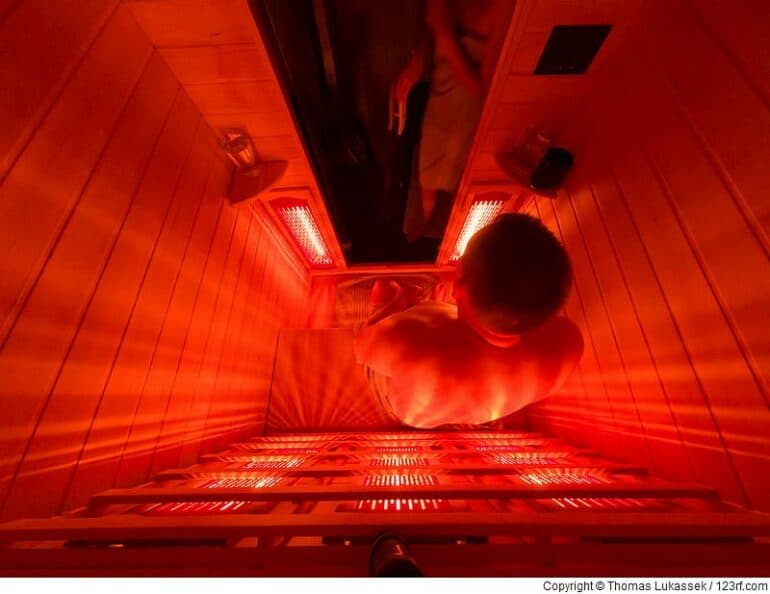How our body reacts to heat in an infrared cabin
To understand the effects of an infrared cabin on your body, it is important to know how our body reacts to extreme heat. The normal body temperature of a healthy person is about 37 °C (98,6 °F). The human body is constantly trying to maintain this temperature. Except
In the same way, the body can cool down by releasing heat to the environment as soon as the ambient temperature is lower than that of the body. In this case, if the temperature difference between the body and the environment is higher, the faster the heat is released. With this knowledge, it is possible to understand how our body cools down.
It also becomes clear that the closer the air temperature is to the body temperature, the more difficult it is for the body to cool down passively. This means that this passive way of losing heat is not very efficient for the body.
What happens when the temperature of the air surrounding the body is higher than the usual body temperature?
In this case, the body can no longer passively lose heat at all, but actually gains heat from the air, which leads to a warming of the body. For this reason, there is also an active way to lose heat, and that again is sweating. By sweating, the body lowers its temperature.
In addition, the body can control how much heat it loses by regulating the intensity of sweating. All of this happens for a reason: the human body needs to keep its normal temperature constant in order to function properly. If you are wondering how sweat can cool down the body, there is a very simple physical explanation for it.
For one thing, your skin has many sweat glands and pores through which sweat can escape. So when you sweat, your entire skin gets wet. Secondly, the water on your skin starts to evaporate, and once this happens, the heat is absorbed by your skin and cools it down.
What happens to the body temperature when using an infrared cabin?
To this question, there is an experiment that was conducted in 2007 by the Royal Institution of Great Britain. The researchers wanted to show how extreme heat affects the human body and how effectively the body regulates body temperature. To conduct the experiment, they needed an infrared cabin and a human test subject.
They wanted to measure the exact internal temperature of the volunteer, for this purpose they used a very small wireless thermometer capsule. The volunteer had to swallow it, and thanks to its radio transmitter, the thermometer transmitted the temperature results in real time to a radio receiver, which was connected to a computer. This allowed the computer to display the internal temperature of the volunteer’s body.
What were the goals of this experiment?
One of the goals was to create conditions similar to some of the hottest places on Earth, such as the Libyan Desert or Death Valley, where temperatures have historically been very close to 58 degrees Celsius (136,4 °F). An ordinary sauna with a stove was considered insufficient to simulate the same natural conditions. For this reason, an infrared cabin was used, as it can better simulate some of the sun’s rays.
The infrared rays not only heat the surface of the skin, but also penetrate the outer tissues. Before entering the sauna, the subject had an internal body temperature of 37.3 °C (99,14 °F). After the infrared cabin was heated to 58 °C (136,4 °F), the subject entered the sauna with his clothes on. He stayed in the sauna for ten minutes, and when he left the sauna he had a temperature of 37.7 °C (99,86 °F). Thus, his internal body temperature was only one third Celsius higher than his initial temperature.
What conclusions were drawn after the experiment?
This experiment demonstrated the natural ability of the human body to efficiently regulate its temperature through sweating in order to maintain vital functions as well as to adjust its metabolism to keep the temperature near the 37 °C (98,6 °F) mark. But in order to sweat efficiently and regulate its temperature, the body needs water.
While the organism can lose one to two liters of water in just one hour through sweating, it can absorb a maximum of 1.5 liters in the same time through the intestines. Therefore, to avoid dehydration, it is necessary to drink enough water before and during the sauna session. This way, you will stay hydrated and be able to take full advantage of the health benefits of an infrared cabin.

